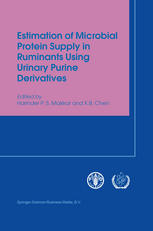

Most ebook files are in PDF format, so you can easily read them using various software such as Foxit Reader or directly on the Google Chrome browser.
Some ebook files are released by publishers in other formats such as .awz, .mobi, .epub, .fb2, etc. You may need to install specific software to read these formats on mobile/PC, such as Calibre.
Please read the tutorial at this link: https://ebookbell.com/faq
We offer FREE conversion to the popular formats you request; however, this may take some time. Therefore, right after payment, please email us, and we will try to provide the service as quickly as possible.
For some exceptional file formats or broken links (if any), please refrain from opening any disputes. Instead, email us first, and we will try to assist within a maximum of 6 hours.
EbookBell Team

0.0
0 reviewsThe Joint FAO/IAEA Division of Nuclear Techniques in Food and Agriculture has a long history of coordinating isotope aided research projects for improving animal productivity in developing countries. These projects have focused on enhancing the efficiency of animal production through better use of locally available feed resources and those that do not compete with human food. As a part of these efforts, the Joint Division has been actively involved in developing and simplifying approaches for measuring microbial protein supply to ruminant livestock. The contribution of microbial protein in meeting the overall requirement for protein in ruminants is significant, but understanding the contribution of microbial protein to the nutrition of ruminant livestock has been hampered by the lack of simple and accurate methods for measuring microbial protein production in vivo. A Consultants’ Meeting was held in 1995 in Vienna to explore the feasibility of using nuclear and related techniques to develop and validate new approaches for measuring microbial protein supply in ruminant animals. Based on the available information, the consultants considered that the purine derivative excretion method, which is non-invasive and both simple to use and inexpensive compared with other available methods, had the potential for use in developing countries. However, development of models for various animal species and breeds and their validation were required before this technique could be advocated for use.